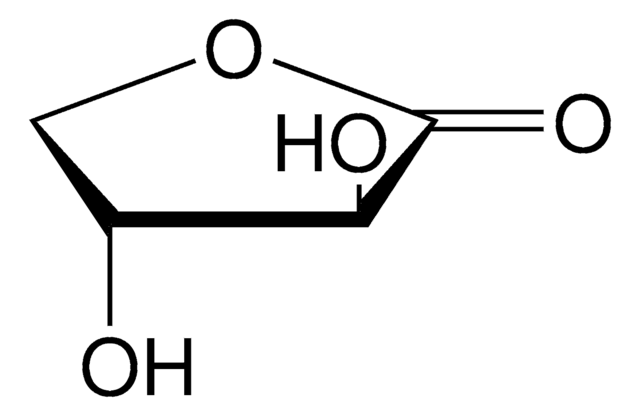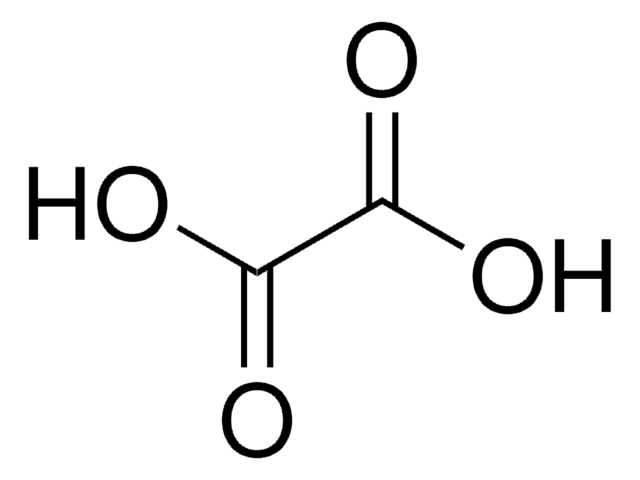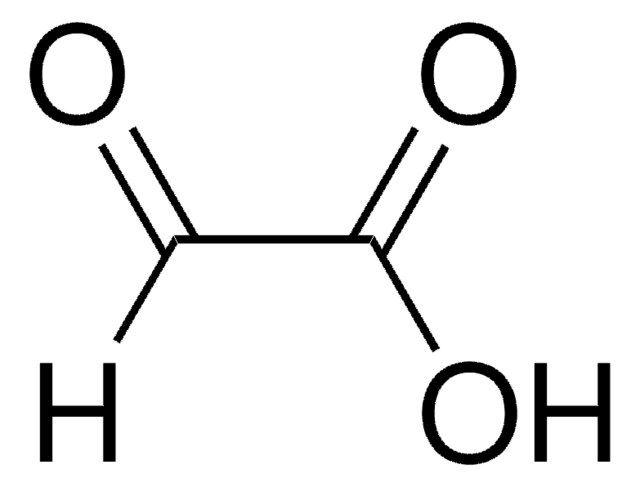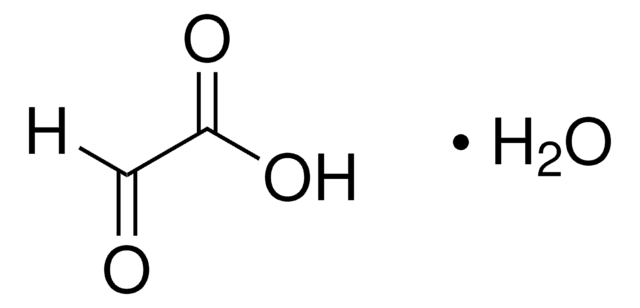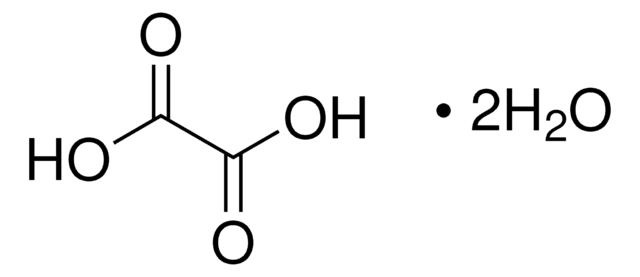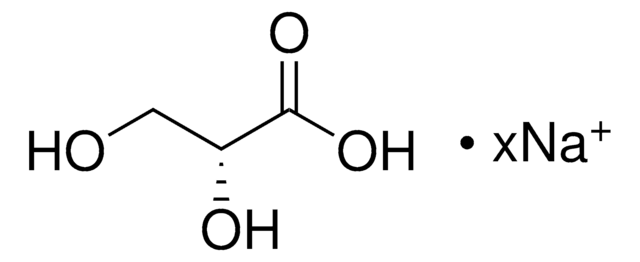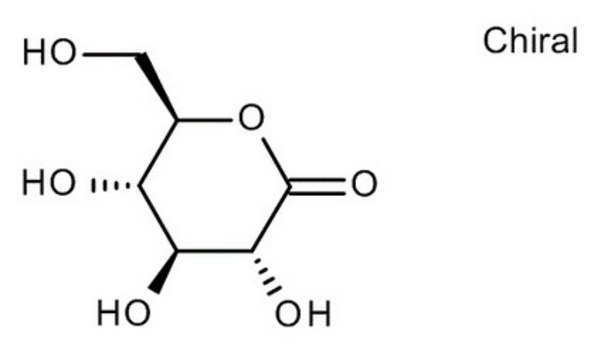All Photos(1)
Synonym(s):
(3R,4S)-3,4-Dihydroxydihydrofuran-2(3H)-one, L-Threonic acid γ-lactone, L-Threonolactone
Empirical Formula (Hill Notation):
C4H6O4
CAS Number:
Molecular Weight:
118.09
Beilstein:
81074
MDL number:
UNSPSC Code:
12352201
PubChem Substance ID:
NACRES:
NA.25
Recommended Products
Assay
≥95.0% (GC)
form
solid
optical activity
[α]/D 29.5±3.5°, c = 1 in H2O
SMILES string
O[C@@H](CO1)[C@@H](O)C1=O
InChI
1S/C4H6O4/c5-2-1-8-4(7)3(2)6/h2-3,5-6H,1H2/t2-,3+/m0/s1
InChI key
SGMJBNSHAZVGMC-STHAYSLISA-N
Other Notes
To gain a comprehensive understanding of our extensive range of Monosaccharides for your research, we encourage you to visit our Carbohydrates Category page.
WGK
WGK 3
Flash Point(F)
Not applicable
Flash Point(C)
Not applicable
Regulatory Information
新产品
Certificates of Analysis (COA)
Search for Certificates of Analysis (COA) by entering the products Lot/Batch Number. Lot and Batch Numbers can be found on a product’s label following the words ‘Lot’ or ‘Batch’.
Already Own This Product?
Find documentation for the products that you have recently purchased in the Document Library.
Alkaline and smith degradation of oxidized dermatan sulphate-chondroitin sulphate copolymers.
L A Fransson et al.
Carbohydrate research, 36(2), 349-358 (1974-09-01)
J P Helsper et al.
Plant physiology, 69(6), 1365-1368 (1982-06-01)
l-Threonic acid is a natural constituent in leaves of Pelargonium crispum (L.) L'Hér (lemon geranium) and Rumex x acutus L. (sorrel). In both species, l-[(14)C]threonate is formed after feeding l-[U-(14)C]ascorbic acid to detached leaves. R. acutus leaves labeled with l-[4-(3)H]-
L Salmon et al.
Carbohydrate research, 335(3), 195-204 (2001-10-02)
Hydroxamic acids derived from aldonic acids, namely aldonohydroxamic acids, have become an increasingly important class of inhibitors of enzymes involved in the metabolism of carbohydrates. We now report the straightforward preparation of various types of aldonohydroxamic acids by a new
Daniel Stettin et al.
Metabolites, 10(4) (2020-04-09)
The development of improved mass spectrometers and supporting computational tools is expected to enable the rapid annotation of whole metabolomes. Essential for the progress is the identification of strengths and weaknesses of novel instrumentation in direct comparison to previous instruments.
Eric L Wise et al.
Biochemistry, 42(42), 12133-12142 (2003-10-22)
3-Keto-L-gulonate 6-phosphate decarboxylase (KGPDC) and orotidine 5'-phosphate decarboxylase (OMPDC) are members of an enzyme suprafamily, the OMPDC suprafamily, because they are homologous enzymes that catalyze mechanistically distinct reactions using different substrates. KGPDC catalyzes the Mg(2+) ion-dependent decarboxylation of 3-keto-L-gulonate 6-phosphate
Our team of scientists has experience in all areas of research including Life Science, Material Science, Chemical Synthesis, Chromatography, Analytical and many others.
Contact Technical Service